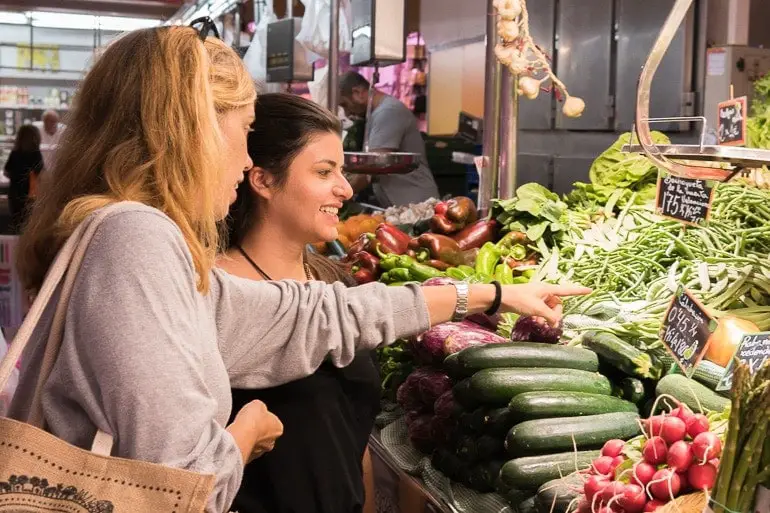
Culinary tourism is an emerging trend among travelers that combines the art of cooking, food and travel: it involves travelers immersing themselves in the local food culture of the places they visit.
The concept of culinary tourism is a relatively new one, but it has gained popularity over the years.
The adventure of tasting different cuisines, learning how to prepare them, and witnessing the behind-the-scenes of food production, gives travelers a unique experience: culinary tourism is not only limited to restaurants and hotels, but it also includes farmers markets, food trucks and cooking schools.
This gives culinary tourists the opportunity to experience the local food culture from global-local perspectives.
Culinary tourism has a great impact on local communities as it creates socio-economic development opportunities. Countries like Italy, France, Mexico, India, Thailand and Japan have established themselves as gastronomic destinations, attracting food enthusiasts from every corner of the world.
Visitors to these destinations have the opportunity to learn about the history and culture of the local community through its culinary traditions, cooking techniques and the use of local ingredients.
In addition, culinary tourism is ideal for those who are passionate about food and cooking. With cooking classes offered in different parts of the world, culinary tourists not only learn how to cook, but they leave with a new skillset that they can use and share with others.
Culinary tourism can also support sustainable food systems.
This is because local food systems tend to be more sustainable, environmentally friendly and healthier than industrialized food systems. Culinary tourism can help preserve food heritage, protect biodiversity and promote small-scale farmers from different parts of the world. In turn, this helps to keep culinary traditions alive and passed down to future generations.
However, culinary tourism is not just about food, it is about the people. Farmers, fishermen, chefs and restaurateurs are the backbone of the culinary tourism industry. They are the ones who produce and prepare the food that attracts culinary tourists. Culinary tourism is about connecting with the people behind the food, learning about their culture and understanding how they live and work.
In conclusion, culinary tourism is a travel trend that is here to stay. It is a trend that has the potential to support the socio-economic development of local communities, preserve food heritage, promote sustainable food systems and create unique experiences for travelers.
Culinary tourism has captured the hearts and stomachs of foodies all over the world, and it is definitely worth giving a try.
- What are the elements of culinary tourism?
- How popular is culinary tourism?
- What is a culinary destination?
- Where did the term culinary tourism come from?
- What type of tourism is culinary?
- What are the synonyms of culinary tourism?
What are the elements of culinary tourism?

The elements of culinary tourism include:
- Food and beverages: Culinary tourism revolves around the food and beverages of a region or a country. It includes local cuisine, traditional dishes, street food, gourmet food, locally sourced ingredients, and specific beverages like wine, beer, and spirits.
- Culinary experiences: Culinary tourism involves experiencing unique dining experiences, cooking classes, food and wine tours, hands-on culinary workshops, and culinary festivals.
- Culture and heritage: The culinary tourism experience is incomplete without learning about the culture and heritage behind the food. This includes understanding the history, traditions, and customs that surround the local cuisine.
- Hospitality and service: The hospitality and service experience during culinary tourism is crucial. It includes the quality of service, the ambiance of the place, and the level of customer satisfaction.
- Tourist infrastructure: Culinary tourism requires proper tourist infrastructure with roadside stalls, food markets, restaurants, accommodation, and accessibility to local produce.
- Marketing and branding: A successful culinary tourism industry relies on effective marketing and branding strategies to promote the unique culinary experiences of a region or a country.
- Sustainability: Culinary tourism requires sustainable food practices that consider the environmental impact of food production and the social responsibility of promoting local cuisine.
How popular is culinary tourism?
According to a report by the World Food Travel Association, culinary tourism is a growing trend, with an estimated 39 million travelers seeking out food and beverage experiences in 2022.
The same report also states that culinary tourism generates more than $150 billion in revenue annually. Additionally, many travel companies and destinations now offer specific culinary tourism experiences and packages, indicating that there is a high demand for this type of travel.
Overall, culinary tourism appears to be popular and growing in popularity.
What is a culinary destination?

A culinary destination is a travel destination that is known for its exceptional food offerings and dining experiences. It is a place where food is more than just sustenance, it is a cultural experience that is cherished and celebrated. These destinations are usually home to a variety of restaurants, markets, and food festivals that showcase the region’s unique cuisine, local ingredients, and culinary traditions.
Examples of culinary destinations include cities like Paris, Tokyo, and New Orleans, as well as countries like Italy, Spain, and Thailand.
Where did the term culinary tourism come from?
The term culinary tourism is believed to have originated in France in the 1970s, where it was known as “tourisme gastronomique” and became popular in the early 1990s when tourism industry experts and the media began to recognize the importance of food and drink experiences as a vital part of travel. T
he phrase “culinary tourism” was subsequently coined to describe this growing trend of travelers seeking out unique food and drink experiences as part of their travel experience.
What type of tourism is culinary?

It involves experiencing the local cuisine, learning about the history and traditions behind it, and enjoying local food and drink products. It is a popular form of tourism that emphasizes the importance of food in culture and the role that it can play in enhancing the overall travel experience.
Culinary tourism can encompass a variety of activities, such as
- food festivals,
- cooking classes
- farm-to-table dining experiences
- wine tours
What are the synonyms of culinary tourism?
- gastronomic tourism
- food tourism
- epicurean tourism
- gourmet tourism
- culinary travel
- culinary exploration
- foodie travel
- culinary adventure
- tasting tourism
- flavor tourism

